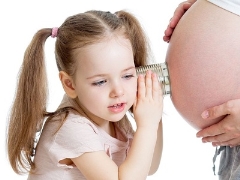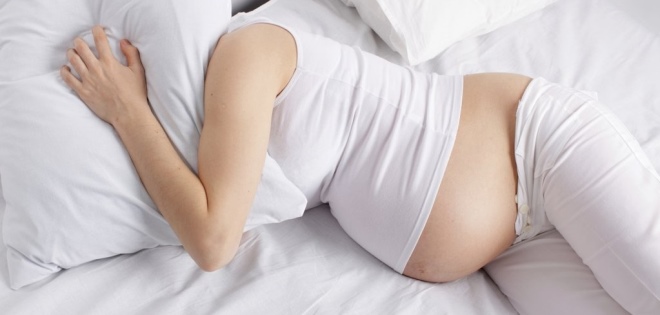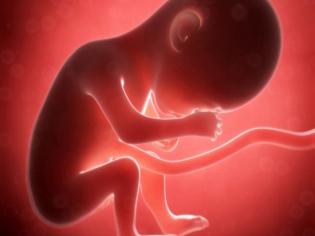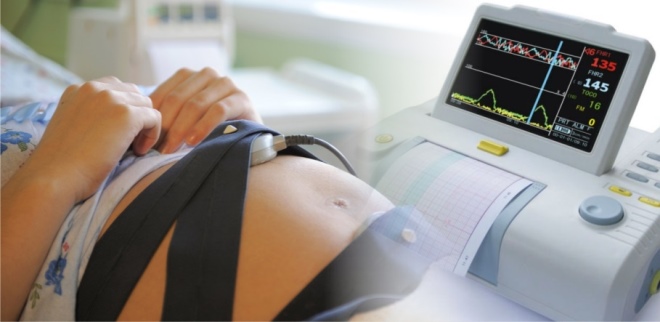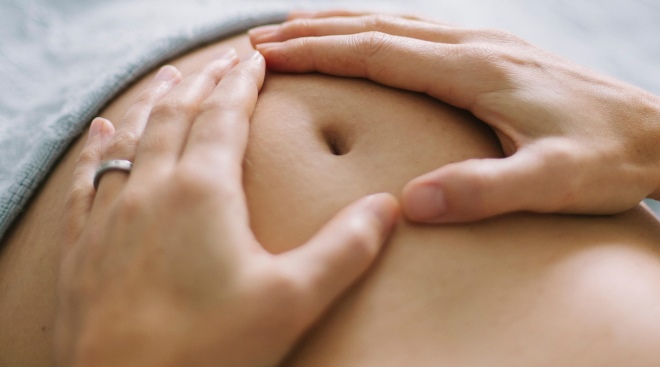Hiccups in a baby in the womb
A child who has not yet been born can do a lot. He breathes and sucks his fist, plays with the umbilical cord, sleeps, smiles and even hiccups. About why there is hiccups in a child in the womb, you will learn by reading this article.
How is it going?
A child hiccups in the same way as each of us - rhythmically, at regular time intervals. The small body shudders at contraction of the diaphragmatic septum. Hiccup crumb may be five minutes and an hour. Hiccups can be repeated at any time of the day. Some women begin to experience baby hiccups for a period of 26 weeks, and others - only a couple of weeks before childbirth. This is a very individual moment.
Children's hiccups in most cases are not considered pathology. although the exact reasons for its appearance are still a great medical mystery, to which there is no exact answer. Selected only suspected causes of this phenomenon.
Lack of information breeds a lot of myths. Some pregnant women (and even their doctors) quite seriously argue that hiccups can be an indirect sign of fetal hypoxia. Hypoxic hiccups in medicine do not exist, and the very link between hiccups and lack of oxygen seems to be sensible to sensible people.
Hiccups do not harm the development of the child, does not affect his state of health and current state, does not lead to developmental defects. Baby do not bother the pain.
The reasons
There are several versions of the origin of prenatal hiccups, but many doctors believe that swallowing the amniotic fluid, which is filled with fetal bladder and in which the baby floats, is to blame.
The swallowing reflex is one of the first to form, and therefore there is nothing surprising in this behavior of the baby. It has been scientifically confirmed that a child from 10-12 weeks of pregnancy actively opens his mouth, sucks on his fingers and may, at the same time, swallow some water.
If you manage to swallow too much, there is a slight overstretching of the stomach, and after a while the baby regurgitates the excess fluid - almost exactly the same as he will after birth. Failed burping and is considered the most common cause of hiccups.
Sucking reflex especially begins to manifest itself in the late stages of pregnancy. The baby can begin to make such movements even in the absence of a finger in the mouth. For example, the sucking reflex "works" when the umbilical cord touches the mouth or cheek of the crumbs. As a result, the ingestion of amniotic fluid occurs more intensely. This annoys the diaphragm, and hiccups begin.
In the later periods, the smallness in which the baby is in the womb also plays its role. He is already big enough, and he is very uncomfortable. Therefore, the internal organs of the crumbs are in a somewhat squeezed state. The inconvenient posture that a mother can take makes changes to the baby’s well-being.
Untested and not scientifically proven, but a very interesting reason is the taste of the amniotic fluid. If mother has eaten sweet, the waters become palatable, and babies from week 20 perfectly distinguish tastes. Scarce swallows such water intentionally.
Hiccup (especially late) is an excellent "training" for the lungs and diaphragm. There is even a theory that states that the punitive cuts are the child’s attempts to make the first respiratory movements.As far as this version is true - it is difficult to judge, because no one has yet been able to confirm or refute it.
It is reliably known that hiccups in adults are associated with air shocks, and in children who have not yet been born - with the ejection of fluid, because there is still no air in their lungs, and therefore the issue with respiratory training cannot be considered unequivocal.
The lack of oxygen and the connection of hypoxia with hiccups are still debated. Opponents of the theory argue that concepts are not interrelated, because all babies hiccupy - even those who do not suffer from hypoxia. However, doctors just in case, advise to more closely "listen" to the behavior of the child.
If hiccups become frequent up to 10–15 episodes per day, the baby’s motor activity has changed (increased movement has decreased or decreased), the stomach visually began to look less - these are mandatory reasons for going to a doctor. And while complaints about the hiccups of the fetus will not be the most basic.
CTG is an informative method that will help dispel or confirm doubts about hypoxia. By the way, with this study, the hiccups of the child (if it starts right while the woman is in the obstetrician’s office) look like graphic short-term “spikes”, and the computer program automatically counts them not for wiggling, but precisely for hacking movements. And at the same time, the diagnosis of "hypoxia" is not established, even if the little hornet had a hatch without a break for the entire hour, while her mother was sitting in the sensors.
How to determine?
Distinguishing hiccups from other movements is quite simple. Usually this does not cause difficulties for future mothers. These are very special feelings that are difficult to confuse with anything. They are rhythmic, light, and jerky, concentrated in one place - where the baby supposedly has a rib cage.
They are easier than wiggling, and resemble the ticking of watches, which is why many mothers do not even pay attention to them. Recognizing hiccups is much easier in late pregnancy. Although the baby swallows water in the first trimester, in all its glory, hiccups manifest themselves only in the second and third segment of the carrying of the fetus.
What should mom do?
The true reasons why a baby hiccups in mom’s stomach remain rather mysterious, but every woman can “calm” her child and reduce the intensity of hiccups:
- If the attack of hiccups in a child does not pass more than 15-20 minutes, you need to get out into the fresh air and stroll a little, taking deep breaths and smooth unhurried exhalations.
- If the child began to hiccup in the middle of the night, a change in body position can help. It is enough to sit down or stand up, walk a little around the room or accept the favorite pose of expectant mothers - knee-elbow.
- If a woman paid attention to the fact that the hiccups in crumbs are activated after she eats sweetshould limit the amount of sweets, especially before bedtime. So there is less chance that the child will begin to hiccup in the middle of the night and will not allow mother to sleep.
- Many babies respond positively to stroking the abdomen, to a quiet conversation. He already knows the voices of mom and dad, so you can try to lull a hiccupy baby in this way.
- Do not be nervous and take sedatives. Hiccups in a child is not a pathology, and therefore it is not necessary to treat or correct anything in this situation. You can try to "calm down" the baby, if it does not bring results, you should not be upset.
For information on why the baby hiccups in the womb, see this video.
